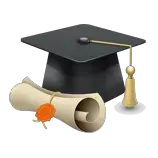Eligibility requirements for studying in the USA
To pursue higher education in the United States, there are various eligibility requirements that international students must meet. One of the crucial factors is having a high school diploma or its equivalent. This means that applicants should have completed their secondary education in their home country. Additionally, some institutions may require students to have a certain grade point average (GPA) or provide transcripts of their academic records. These requirements help universities and colleges assess the academic aptitude and preparedness of potential students before admission.
In addition to academic qualifications, English language proficiency is a vital prerequisite for studying in the USA. Since most courses are offered in English, international students need to demonstrate their ability to effectively communicate in this language. Commonly accepted English language tests include the Test of English as a Foreign Language (TOEFL) and the International English Language Testing System (IELTS). Universities and colleges set minimum scores for these tests, which applicants must achieve to be considered for admission. Adequate language proficiency ensures that students can effectively engage in coursework, participate in discussions, and succeed in academic endeavors during their time in the US.
Academic qualifications needed for studying in the USA
To pursue higher education in the United States, students must meet certain academic qualifications. These qualifications vary depending on the level of study and the institution they wish to apply to. The most common prerequisite for undergraduate studies is a high school diploma or equivalent. This ensures that students have acquired the necessary foundation in various subjects and are prepared for the rigors of university-level coursework. Additionally, some universities may require applicants to have completed specific high school courses, such as English, mathematics, science, and social studies, to demonstrate their proficiency in these areas.
For graduate programs, the academic qualifications are more specialized and tailored to the chosen field of study. A bachelor’s degree is typically a prerequisite, and it may need to be in a related field or have specific coursework relevant to the desired graduate program. Along with the degree, universities often require applicants to submit their academic transcripts, which provide a comprehensive record of their previous studies and grades. Graduate programs may also consider factors such as GPA, letters of recommendation, and relevant work experience when evaluating applicants. Furthermore, certain fields, such as medicine or law, have additional academic requirements, such as specific undergraduate degrees or standardized tests, like the MCAT or LSAT, to ensure competence in these specialized areas.
English language proficiency requirements for studying in the USA
English language proficiency is a crucial requirement for international students aiming to study in the USA. Proficiency in English is necessary to ensure effective communication and comprehension in a predominantly English-speaking academic environment. Most universities and colleges in the USA have specific English language proficiency requirements that applicants must meet before being accepted into their programs.
The most commonly accepted standardized tests for English language proficiency include the Test of English as a Foreign Language (TOEFL) and the International English Language Testing System (IELTS). These tests assess the four essential skills of listening, speaking, reading, and writing. The results provide universities and colleges with an objective measure of an applicant’s English language abilities. Minimum score requirements may vary depending on the institution and program, so it is important for prospective students to research the specific English language proficiency requirements of their desired universities or colleges. Additionally, some institutions may offer their own language proficiency exams or accept alternative English language tests, so it is advisable for students to check for any such options.
Financial requirements for studying in the USA
To pursue higher education in the United States, it is important for international students to have a clear understanding of the financial requirements associated with studying in the country. One of the primary financial considerations is tuition fees. The cost of tuition varies depending on the institution and the program of study. Additionally, living expenses such as accommodation, meals, transportation, and healthcare must also be factored in. It is crucial for students to have a realistic estimate of the total expenses they will incur during their time in the USA, ensuring they are financially prepared for their educational journey.
Another important aspect of financial requirements is the availability of scholarships and financial aid. Many universities and colleges in the USA offer scholarships and grants to international students based on merit, financial need, or a combination of both. Scholarships can significantly reduce the financial burden on students and make studying in the USA more affordable. It is advisable for students to research and explore the various scholarship opportunities available to them, as this can make a substantial difference in their financial planning. However, it is important to note that scholarships are competitive, and students should start the application process well in advance to increase their chances of securing financial assistance.
Visa requirements for studying in the USA
For international students planning to study in the USA, obtaining an appropriate visa is an essential requirement. The most common visa category for students is the F-1 student visa. To be eligible for an F-1 visa, students must have been accepted into a full-time academic program at a recognized educational institution in the USA. This program should be approved by the Student and Exchange Visitor Program (SEVP), which ensures that the institution meets certain quality standards and can support international students.
Along with the acceptance letter, students need to provide proof of financial resources to cover their tuition fees, living expenses, and other related costs while studying in the USA. This is because the F-1 visa requires students to prove that they have sufficient funds to support themselves throughout their educational program. Additionally, students may also need to provide evidence of health insurance coverage, a valid passport, and a completed visa application form. The visa application process may vary depending on the student’s country of residence, so it is crucial to consult with the embassy or consulate to ensure all necessary documents are prepared and submitted correctly.
Application process for studying in the USA
The application process for studying in the USA can be quite extensive and requires careful attention to detail. One of the first steps is to research and select the universities or colleges that align with your academic goals. It is important to consider factors such as location, reputation, program offerings, and costs. Once you have narrowed down your choices, you will need to complete the application forms for each institution. These forms typically require personal information, educational background, and sometimes an essay or statement of purpose. It is crucial to accurately and honestly complete these forms, as any misinformation or omissions may lead to your application being rejected.
In addition to the application forms, you will need to provide supporting documents such as transcripts, letters of recommendation, and proof of English language proficiency. Transcripts should be sent directly from your previous educational institutions to the universities or colleges you are applying to. It is advisable to request these documents well in advance to allow for processing time. Letters of recommendation should be obtained from individuals who can speak to your academic abilities, character, and potential for success in your chosen field. To demonstrate English language proficiency, you may need to take standardized tests such as the TOEFL or IELTS. These tests assess your ability to read, write, speak, and understand English. It is important to prepare thoroughly for these exams to achieve your best possible scores.
Standardized tests required for studying in the USA
Standardized tests hold significant importance in the college application process for international students aspiring to study in the USA. These tests serve as a standardized measure of a student’s academic abilities and potential. The two most commonly required standardized tests for studying in the USA are the SAT (Scholastic Assessment Test) and the ACT (American College Test). Both these tests assess a student’s knowledge and skills in subjects such as math, reading, and writing. The scores obtained in these tests often play a crucial role in determining a student’s admission into a university or college in the USA.
The SAT is accepted by almost all universities and colleges across the USA, and its scores are a key criterion for evaluating an applicant’s readiness for undergraduate programs. Comprising sections like Mathematics, Evidence-Based Reading, and Writing, the SAT measures a student’s critical thinking, analytical reasoning, and problem-solving abilities. On the other hand, the ACT is an alternative test that assesses similar academic skills but includes a Science section as well. It is administered to students who prefer a different format or feel that their strengths align better with the ACT’s structure. While some institutions may have a preference for one test over the other, it is advisable for international students to check the specific requirements of their target universities regarding which test scores they accept.
Documents needed for studying in the USA
When planning to study in the USA, there are several key documents that you will need to gather in order to meet the necessary requirements. Firstly, you will need a valid passport that is not set to expire within the next six months. This is crucial as it establishes your identity and allows for international travel. Additionally, you will need to obtain an I-20 form, which is provided by the academic institution you plan to attend. The I-20 confirms your acceptance as a student and is necessary in order to obtain a student visa. Furthermore, you should gather all your academic records and transcripts, including diplomas or degrees obtained from previous educational institutions. These documents are essential for proving your educational background and ensuring that you meet the academic qualifications needed for studying in the USA.
In addition to the required identification documents and academic records, you will also need to provide evidence of financial support. This includes bank statements or financial sponsor letters that prove your ability to cover the costs of tuition fees, living expenses, and other related expenses for the duration of your studies. It is important to note that the specific financial requirements may vary depending on the institution you are applying to and the program you are interested in. Therefore, it is crucial to thoroughly review the financial documentation needed by the particular institution you are applying to. By ensuring that you have all the necessary documents in order, you can streamline your application process and increase your chances of successfully studying in the USA.
Choosing the right university or college in the USA
When it comes to choosing the right university or college in the USA, prospective students have a multitude of options to consider. The first and most important factor to take into account is the academic program or major offered by the institution. Whether a student is interested in engineering, business, or the arts, it is crucial to find a university or college that offers a strong and reputable program in their desired field of study. Conducting thorough research on each institution’s course offerings, faculty qualifications, and curriculum structure is essential in making an informed decision.
In addition to the academic program, another vital aspect to consider is the location of the university or college. The USA is a vast country with diverse landscapes, cultures, and climates. Students should think about the environment in which they would thrive academically and personally. Some may prefer the bustling city life offered by universities in New York or Los Angeles, while others may be drawn to the serene college towns in the Midwest or the picturesque coastal campuses. The location plays a significant role in overall student experience and should align with individual preferences and needs.
Benefits and opportunities of studying in the USA
The United States is known for its top-tier educational institutions and diverse range of academic programs. Studying in the USA provides students with numerous benefits and opportunities that can have a lasting impact on their personal and professional lives. One of the key advantages is the access to high-quality education from renowned universities and colleges. The USA is home to many prestigious educational institutions that offer cutting-edge research facilities and world-class faculty. This ensures that students receive a comprehensive and top-notch education that prepares them for success in their chosen field.
Another significant benefit of studying in the USA is the opportunity to immerse oneself in a culturally diverse environment. The country attracts students from all over the world, creating a multicultural setting that fosters cross-cultural understanding and global collaboration. This exposure to different perspectives and traditions helps students develop a broader worldview and enhances their ability to work effectively in a global context. Additionally, studying in the USA provides ample opportunities for personal growth and self-discovery. Students have the chance to explore new interests, engage in extracurricular activities, and build lifelong friendships with people from diverse backgrounds. The USA’s vibrant social scene and dynamic campus life contribute to a holistic college experience that extends beyond the classroom.






